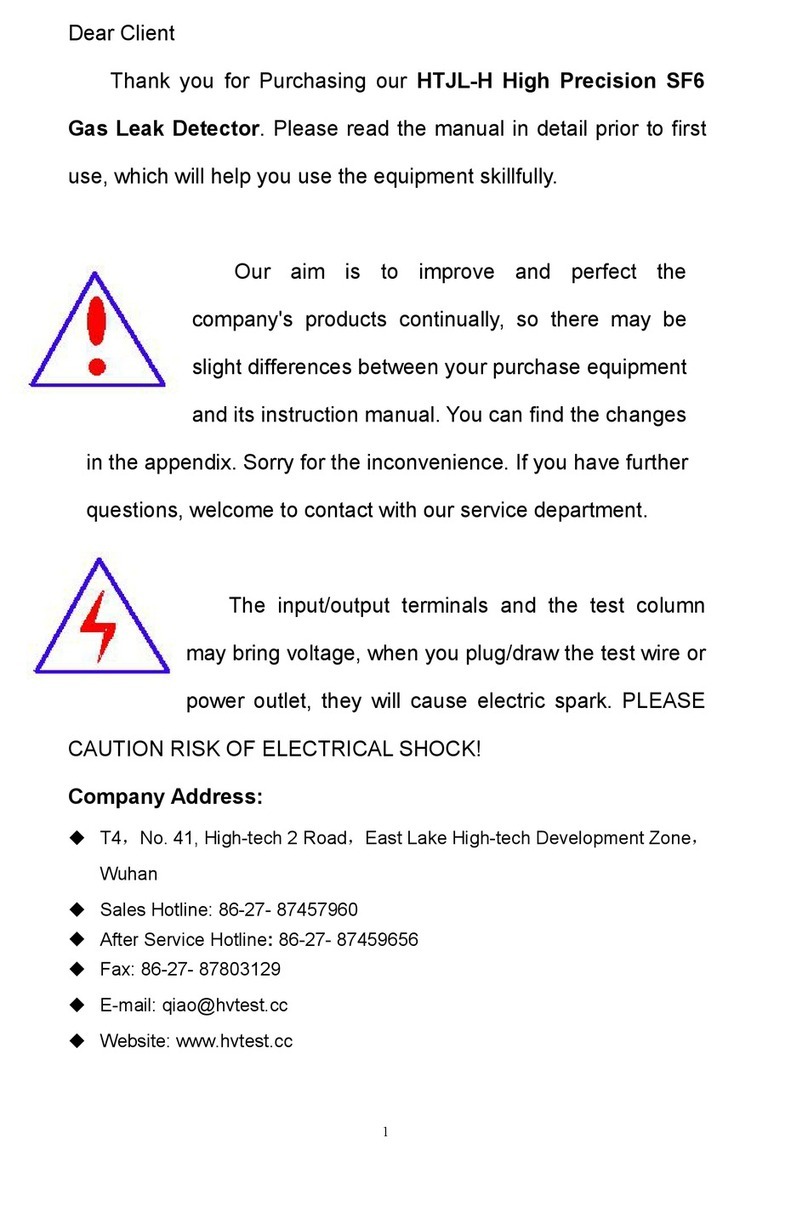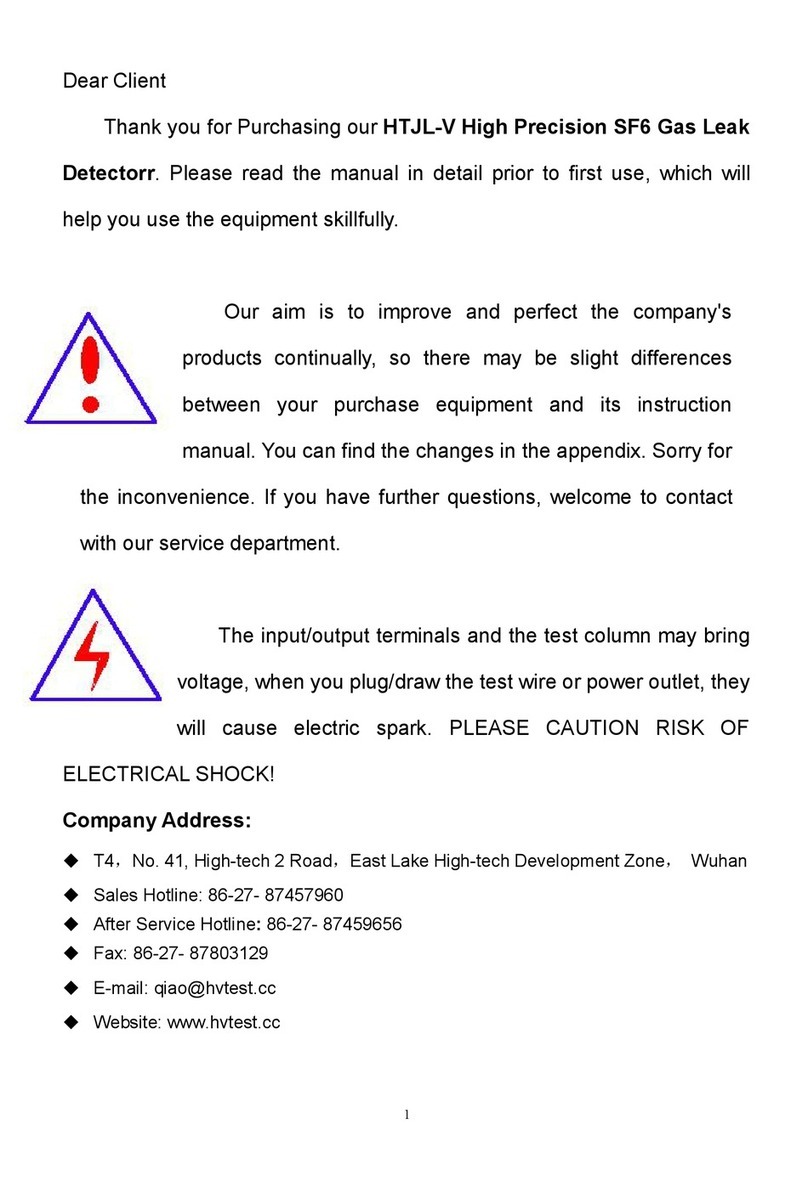
9
measured.
Reset function - Press the reset, clear reset function. When you press the
reset button, the instrument will be reset to zero, ignoring the presence of
refrigerant around the probe. Such operations can be detected at higher
concentrations. The instrument is reset to a clean air can be adjusted to the
maximum sensitivity. When you press the reset button, light-emitting diodes
(except the leftmost outer) will turn orange, about one second to confirm the
reset operation.
3. Sensitivity adjustment
The instrument has a seven-gear adjustable sensitivity. Press the button
to increase or decrease the sensitivity, the corresponding sensitivity is
indicated by LEDs. "Beep" may indicate the frequency difference sensitivity.
When turned on, the instrument automatically identified as the 5th gear.
Press the key to increase/ reduce sensitivity key, you can adjust the
sensitivity.
When you press the button to adjust, the light-emitting diode display in
red.
* Each increase (or decrease), indicate the relative sensitivity change
doubled, which makes this the largest increase instrument sensitivity 64 times.
Alarm
The instrument has 18 alerts, thus clearly indicating the relative leak
volume and strength. Progressive indication can be used to locate the leak
point. Because the increased alert level indicates that the source of the leak is
approaching (at the highest concentration). Each level by the corresponding
the red, green and orange light-emitting diodes, said one (see Figure 6).




























